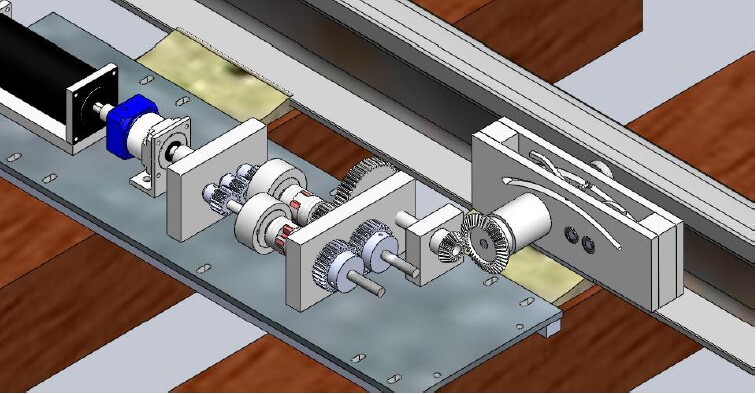While city dwellers may be used to railway crossings marked with flashing red lights, the easier-to-miss warnings at rural crossings often just consist of a sign. That's because there's no easy way of providing electricity to such isolated locations. While solar panels could provide part of the solution, a team of engineering students and faculty at the University of Nebraska-Lincoln believe that photovoltaics alone can't consistently provide enough power. Instead, they devised several systems that harness power from the rails themselves.
One system incorporates an inductive coil that's attached to the rail, located above a permanent magnet with a radial magnetic field that's mounted on the ground. As the rail flexes vertically under the weight of a passing train, the coil repeatedly moves up and down through the magnetic field, generating an electrical current.
In another system, a strip of piezoelectric material is mounted on the underside of the rail. As that rail flexes under use, the material is subjected to mechanical strain, producing an electrical charge.
Lab and field tests showed that while both of these systems created enough current to run wireless sensors such as those used in track health monitoring systems – which could definitely be an asset in its own right – they weren't providing enough to illuminate warning lights.

This brought on the design of another system, in which the vertical flexion of the rail moves an attached ratcheting mechanism that turns a planetary gearbox (seen above), which subsequently drives a generator mounted on the ties. The scientists also created a hydraulic system, in which the vertical deflection of the rail drives a hydraulic cylinder that's wired to a motor.
Although these two systems were shown to generate sufficient power, they still both rely on considerable flexion of the rails – something that can't always be counted on, particularly when cold weather makes the rails stiff.
With this in mind, another system was created (seen below). In its case, a spring-loaded cam mechanism that's mounted on the rail is pushed forward by each train wheel, and then springs back to its starting position once that wheel has passed. That oscillating motion drives a generator, in turn producing enough electricity to power warning lights.

The research was carried out by students Abolfazl (Sina) Pourghodrat , Sean Hansen and Vedvyas Kamarajugadda, along with faculty members Carl Nelson and Stephen Platt. It was recently described in a paper published in the Journal of Rail and Rapid Transit.
Source: University of Nebraska-Lincoln






